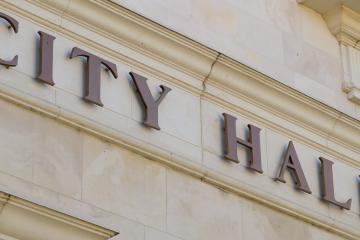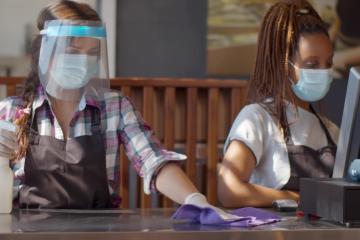
Promoting upward mobility in partnership with state and local governments: The intersection of gender, race, health, and poverty alleviation

This blog post is part two of three in a series (see posts one and three) on how state and local governments in the United States can promote upward mobility in their communities. It is part of J-PAL North America’s work to develop a learning agenda that summarizes the core research priorities from state and local governments and provides guidance for concrete action.
State and local governments are well positioned to pioneer new strategies for reducing poverty and promoting upward mobility. In the first post in this blog series, we provided an overview of the themes that emerged from research proposals submitted by state and local governments to J-PAL’s State and Local Innovation Initiative over the past five years. These proposals identified critical knowledge gaps in addressing pressing policy challenges. In this post, we take a closer look at two of these policy areas: health and wellness, and gender and race.
Of the 124 proposals we received, several identified discrimination on the basis of gender and/or race as barriers to upward mobility. Many proposals present disaggregate data that identifies by gender and race, revealing disparities within many policy areas such as safety and justice, human capital, and economic security. Drawing on the US Partnership on Mobility from Poverty’s definition of upward mobility, it is important to recognize that, in addition to limiting economic mobility, bias restricts individual power, autonomy, and community connection by entrenching systemic inequities.
Many proposals center racial and gender discrimination in tackling mobility from poverty. For example, one jurisdiction aims to evaluate the relationship between school faculty’s implicit biases and gaps in student achievement, completion, and economic mobility. The jurisdiction seeks to do this through the use of implicit association tests and training on implicit biases.
Other proposals offer interventions to decrease disparities within the bail system. For example, one jurisdiction seeks to inform judges of common overestimation of pretrial risk of misconduct by race and individualized feedback on their past performance to make them aware of their own biases.
In the sphere of health and wellness, many proposals offer interventions to address opioid use disorder through screenings, prescription monitoring, direct treatment of addiction, and prevention strategies. Other proposals aim to expand access to behavioral health care in several systems, such as integration in primary care settings, or felony diversion programs that provide treatment services to individuals presumed incompetent to stand trial. Many interventions are geared towards child health and development through the use of parent support programs that provide health resources and education, or text messaging to pregnant mothers and young parents to encourage the adoption of healthy parenting practices.
The policy challenges articulated in these proposals underscore a need to build more equitable systems so that interventions that aim to lift individuals from poverty can be scaled to serve larger populations, and more effective in achieving their intended impact. Interventions are most effective when they address the many factors that hold individuals in poverty rather than just one. Moreover, they showcase the shortcomings of existing policies, such as cash assistance, that are meant to lift individuals out of poverty, but often merely keep individuals afloat and reinforce cyclical poverty.
Among the proposals revolving around gender and race, and health and wellness, we can find common pathways to address a myriad of intertwined challenges. Interventions such as objective information sharing among judges and behavioral healthcare for individuals with felony convictions provide promising channels through which to mitigate issues like bias in sentencing and could help previously incarcerated individuals re-enter society with support. They could also reduce long-term costs that come with recidivism or retaining individuals within the prison system. Asset-building bridges, which provide individuals with financial assistance at various points in life (from baby bonds through universal basic income interventions for adults), have the potential to improve economic success, expand access to health care, and overall, promote better health and behavioral outcomes for all individuals.
There is an especially urgent need to prioritize many of these efforts at a time when the Covid-19 pandemic has exacerbated long existing disparities, especially those that are considered social determinants of poor health outcomes. Low-income communities—many of which face racial marginalization—are more at risk of poor health outcomes, particularly when many low-wage workers are considered essential.
To address these disparities, J-PAL North America’s Covid-19 Recovery and Resilience Initiative along with our Covid-19 evidence portal aims to identify the most effective methods to assist impacted individuals and communities. These tools may help state and local policymakers implement evidence-based solutions that may help communities recover and continue to grow. We will discuss such evidence-based solutions in our upcoming webinar on state and local government responses to Covid-19 on November 20.
These are just a few examples of approaches that state and local governments can take to address multiple policy challenges within a singular intervention. In the next and final post in this series, we will summarize core research priorities from state and local governments, outline key opportunities for future research, and provide guidance on how to translate the learning agenda into concrete action.



